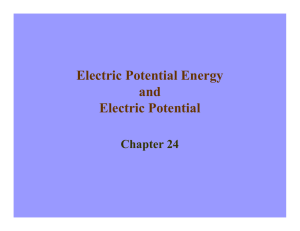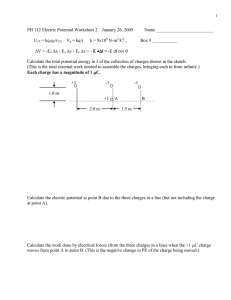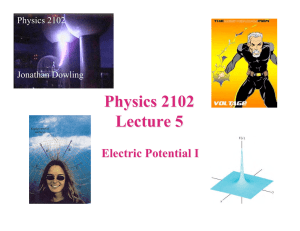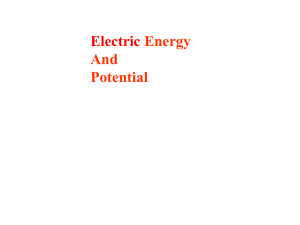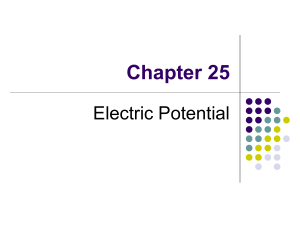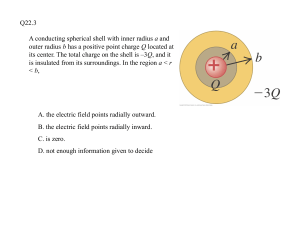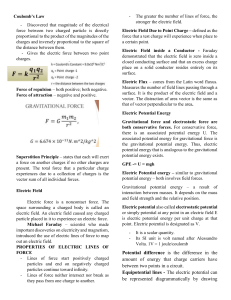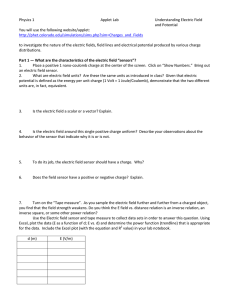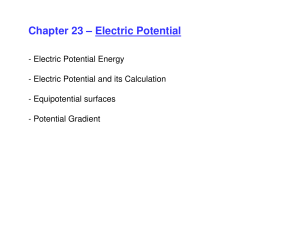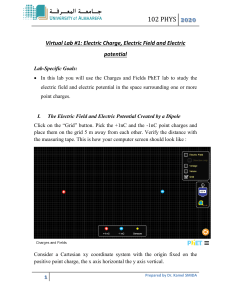Electric potential
advertisement
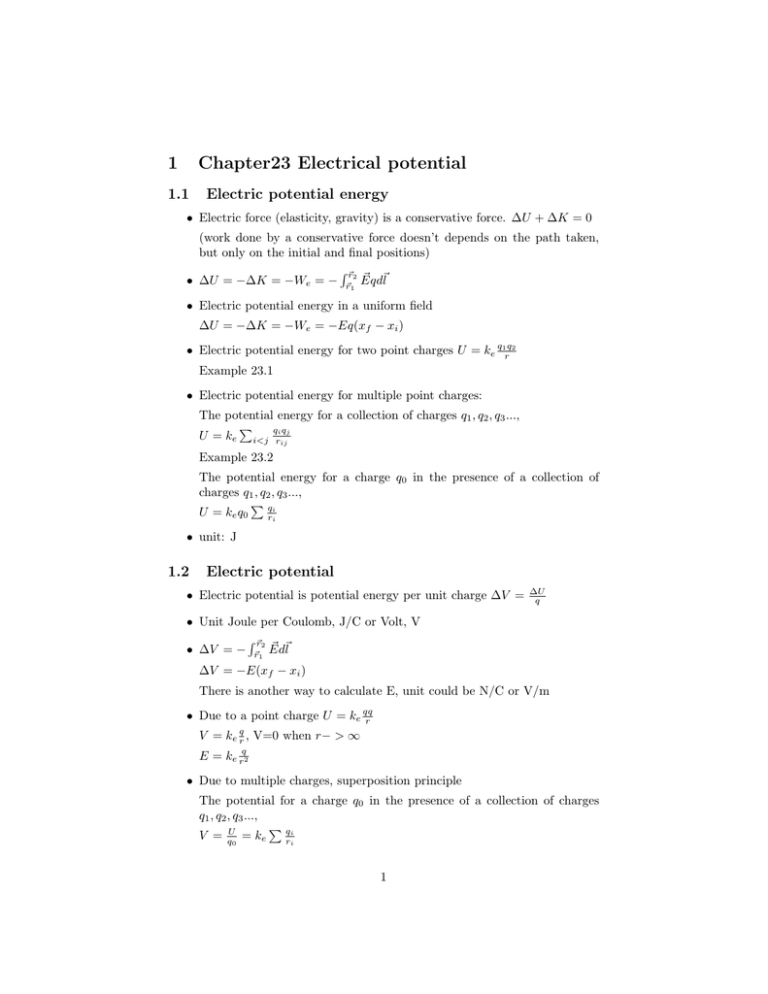
1 Chapter23 Electrical potential 1.1 Electric potential energy • Electric force (elasticity, gravity) is a conservative force. ∆U + ∆K = 0 (work done by a conservative force doesn’t depends on the path taken, but only on the initial and final positions) R ~r ~ ~l • ∆U = −∆K = −We = − ~r12 Eqd • Electric potential energy in a uniform field ∆U = −∆K = −We = −Eq(xf − xi ) • Electric potential energy for two point charges U = ke q1rq2 Example 23.1 • Electric potential energy for multiple point charges: The potential energy for a collection of charges q1 , q2 , q3 ..., P q q U = ke i<j riijj Example 23.2 The potential energy for a charge q0 in the presence of a collection of charges q1 , q2 , q3 ..., P qi U = ke q0 ri • unit: J 1.2 Electric potential • Electric potential is potential energy per unit charge ∆V = ∆U q • Unit Joule per Coulomb, J/C or Volt, V R ~r ~ ~l • ∆V = − ~r12 Ed ∆V = −E(xf − xi ) There is another way to calculate E, unit could be N/C or V/m • Due to a point charge U = ke qq r V = ke rq , V=0 when r− > ∞ E = ke rq2 • Due to multiple charges, superposition principle The potential for a charge q0 in the presence of a collection of charges q1 , q2 , q3 ..., P qi V = qU0 = ke ri 1 • Due to a charge distribution Va −Vb = Rb a ~ ~l = Ed Rb a Ecosφdl = − Ra b Ecosφdl HW3.6 • electron volt (eV), the kinetic energy that an electron gains when accelerated through a potential difference of 1V. 1eV = 1.6 × 10−19 C.V = 1.6 × 10−19 J 1.3 Equipotential surface • Charged conductor in electrostatic equilibrium: electric potential is constant everywhere inside a conductor and equal to the same value at the surface. VA = VB , W = 0 • No work is required to move a charge at constant speed on an equipotential surface. • Electric field is perpendicular to the equipotential surface. 2
